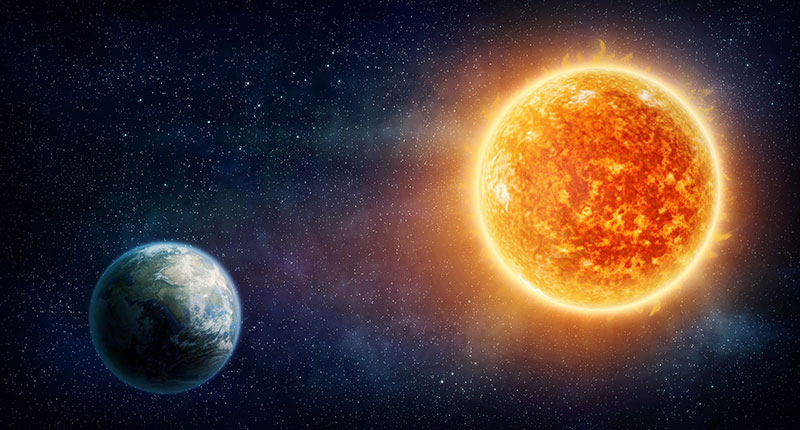
Solar flares are one of the most powerful and intriguing phenomena in our solar system. These violent eruptions on the surface of the sun can release an enormous amount of energy, creating a wide range of effects on our planet. From beautiful auroras to harmful radiation, solar flares have a significant impact on Earth. In this article, we’ll explore what solar flares are, how they form, and what effects they have on our planet.
What are Solar Flares?
A solar flare is a sudden, intense burst of radiation that originates from the sun’s surface. They occur when the magnetic field lines on the sun get twisted and tangled, releasing a massive amount of energy in the process. The energy released by a solar flare is equivalent to millions of nuclear bombs exploding at the same time.
The Formation of Solar Flares
Solar flares are the result of complex interactions between the sun’s magnetic field and plasma. The sun’s magnetic field is created by the motion of electrically charged particles in the sun’s outer layers. As these particles move, they create magnetic fields that extend out into space.
Sometimes, the magnetic field lines become twisted and tangled, creating a region of intense magnetic activity on the sun’s surface. This is known as an active region. When the magnetic field lines in an active region become too twisted, they can snap and release a huge amount of energy in the form of a solar flare.
Types of Solar Flares
Solar flares are classified based on their strength, with the most powerful ones classified as X-class flares. There are also M-class and C-class flares, which are less intense.
The Effects of Solar Flares on Earth
Solar flares can have a wide range of effects on Earth, both positive and negative. Here are some of the most significant effects:
- Communications Disruptions Solar flares can disrupt communications systems, including radio and satellite communications. The charged particles released by a solar flare can interfere with radio signals, causing disruptions or complete blackouts.
- Power Grid Failures Solar flares can also cause power grid failures. The electrical currents induced by the charged particles released by a solar flare can overload power grids, leading to blackouts and damage to electrical infrastructure.
- Radiation Exposure Solar flares can expose astronauts, airline crew, and people living at high altitudes to increased levels of radiation. This can have long-term health effects, including an increased risk of cancer.
- Aurora Borealis One of the most beautiful effects of solar flares is the aurora borealis, also known as the Northern Lights. When charged particles from a solar flare enter Earth’s atmosphere, they interact with the Earth’s magnetic field, creating a colorful display of light in the sky.
- Satellite Damage Solar flares can also damage satellites, including those used for weather forecasting and GPS. The charged particles released by a solar flare can cause satellite electronics to malfunction, leading to errors in weather forecasts and disruptions in GPS navigation.
Predicting Solar Flares
Scientists have developed several methods to predict when solar flares are likely to occur. One of the most important tools for predicting solar flares is the Solar Dynamics Observatory (SDO), a spacecraft that constantly monitors the sun’s activity.
The SDO takes high-resolution images of the sun’s surface, allowing scientists to track changes in the sun’s magnetic field and identify regions that are likely to produce solar flares.
Protecting Ourselves from Solar Flares
While we can’t prevent solar flares from occurring, we can take steps to protect ourselves from their effects. One of the most important things we can do is to limit our exposure to radiation.
This means avoiding unnecessary air travel during periods of high solar activity and taking shelter during a solar storm. It also means using protective equipment, such as radiation shielding, when working in space or at high altitudes.
Studying Solar Flares
Scientists are constantly studying solar flares to better understand their effects on Earth and the sun’s overall activity. One of the most important tools for studying solar flares is the Solar and Heliospheric Observatory (SOHO), a joint mission between NASA and the European Space Agency.
The SOHO spacecraft studies the sun’s atmosphere and solar wind, providing valuable data on the sun’s activity and how it affects Earth.
Conclusion
Solar flares are a fascinating and powerful phenomenon that have a significant impact on our planet. From beautiful auroras to dangerous radiation exposure, solar flares remind us of the complex and interconnected nature of our solar system.
By studying solar flares, we can better understand our place in the universe and develop strategies to protect ourselves from their effects.
FAQs
1. How often do solar flares occur?
- Solar flares occur regularly, but their frequency varies depending on the sun’s activity cycle.
2. Can solar flares cause global warming?
- No, solar flares do not cause global warming. The Earth’s climate is primarily influenced by greenhouse gas emissions from human activities.
3. Can solar flares cause cancer?
- Solar flares can increase our exposure to radiation, which can increase the risk of cancer. However, the risk is relatively small and is primarily a concern for astronauts and people living at high altitudes.
4. Can we predict solar flares?
- Yes, scientists can predict when solar flares are likely to occur by monitoring the sun’s activity.
5. Can solar flares damage the Earth’s atmosphere?
- Solar flares can cause temporary disruptions in the Earth’s atmosphere, but they do not cause long-term damage.
